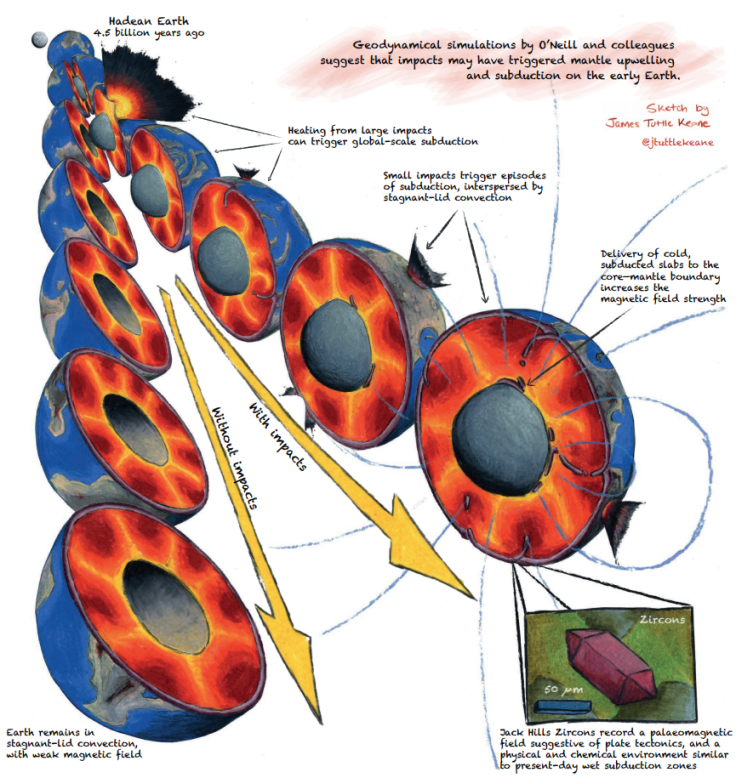Asteroid bombardment sent the Earth's crust into meltdown 4 billion years ago
Impacts from space may have been responsible for the first recycling of the Earth's crust.

Asteroids hitting the young Earth kick-started the first tectonic activity, melting and reforming the crust over the hot mantle.
The Hadean Eon, between 4.56 and 4 billion years ago, is a poorly understood period in the geological record. There are few sources of evidence that have survived intact for more than 4 billion years.
In this period, the early Earth was previously thought to be too hot for tectonic activity, where the plates of the planet's crust shift and slide over and under each other. When they are forced down into the hotter mantle, they melt into magma to be recycled. At boundaries where the plates are moving apart, new crust forms from magma welling up from below.
But a new study in the journal Nature Geoscience has claimed that tectonic activity was happening on the Earth much earlier than previously thought. The scientists, at Macquarie University in Australia, used numerical simulations to find out that only asteroid impacts could have been large enough to cause this seismic reaction.
"It has been suggested that large impacts could kick-start subduction initiating partial, or even wholesale, recycling of the lithospheric lid but the applicability of this under early Earth conditions, and its long-term effect on system dynamics, have not been explored quantitatively," the authors write in the paper.
Crystals of the mineral zircon suggest that there was some tectonic activity during the Hadean Eon. The numerical simulations backed up these findings.
The energy delivered by the asteroids was enough to disrupt the Earth's interior and create rising plumes of mantle material, the researchers found. They also caused the crust to thin, affecting the nature of the tectonic movements. But after a while, the hot background temperature of the mantle took over, and made tectonic activity die down again.
"The early bombardment history of a planet may be one of the dominant factors in planetary evolution, and stochastic variations in impact flux during this critical epoch, as perhaps existed between Earth and Venus, may be a significant contributor to their divergent evolution," the authors conclude.
© Copyright IBTimes 2025. All rights reserved.





















